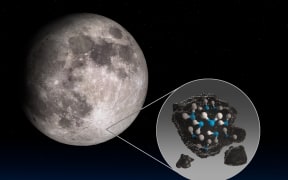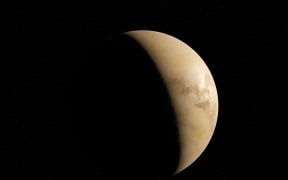Sky watchers are in for a rare treat as Jupiter and Saturn come so close to each other they will almost look like a single shining planet in the sky.
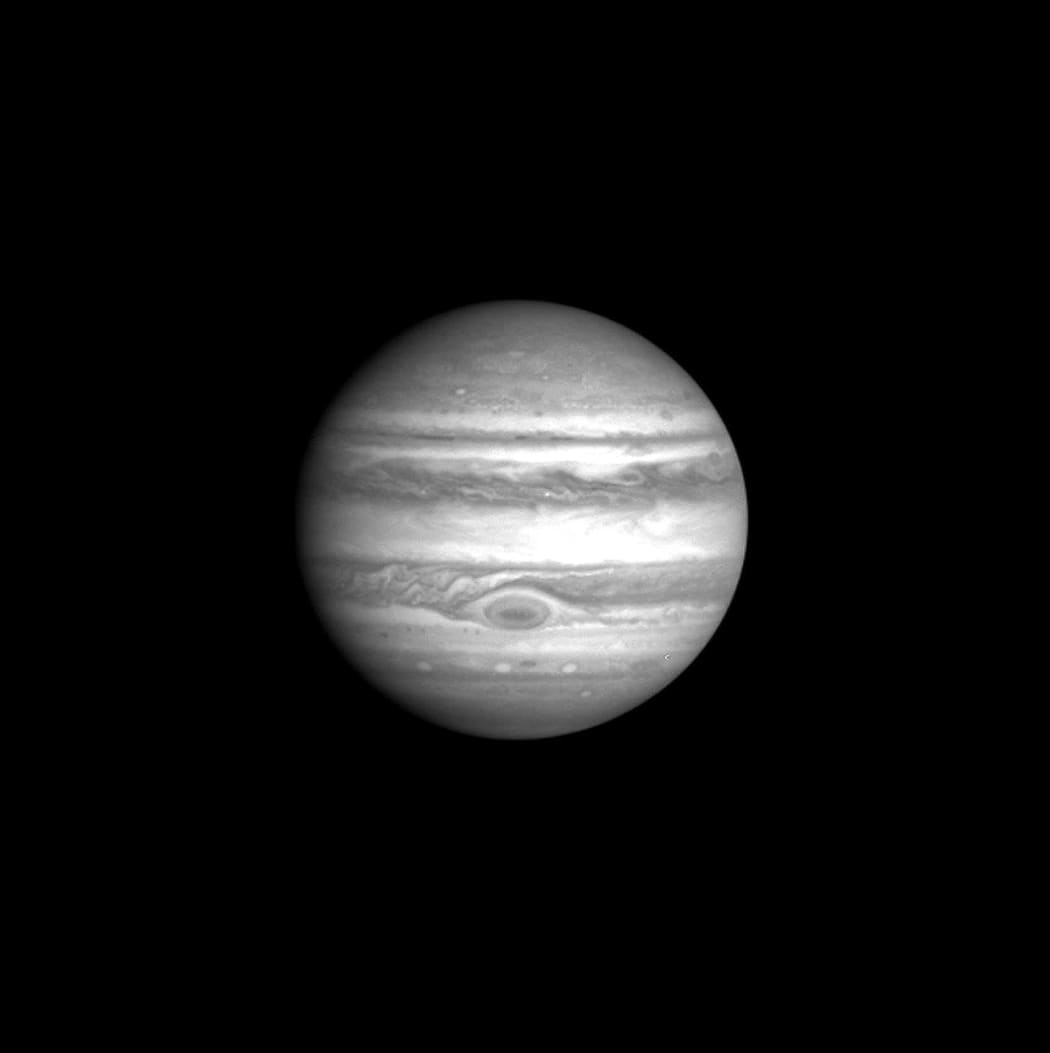
Jupiter on its way to a 2004 rendezvous with Saturn. Photo: NASA / AFP
Saturn has been trailing Jupiter across the night sky over the past few months.
The two planets will draw closer and closer in the next three weeks, until they appear together at 13.33 UTC on 21 December - which in New Zealand will be about 2am on 22 December.
This event, known as a grand conjunction, happens about once every 20 years.
But the closeness of the two planets makes this a very rare conjunction.
With only about a 10th of a degree separating the two planets - that's a fifth of the width of the Moon - this is the closest they will have appeared in the sky to each other in nearly 400 years. The last time it occurred was in 1623.
They will be so close together that you will be able to see them in one eyepiece of a telescope, says Andrew Jacob, curator at Sydney Observatory.
"You would be lucky to see this once in a lifetime," he says.
The two planets won't appear this close to each other again until 2080.
While the planets look close to each other from Earth, in reality they are separated by vast distances as they orbit the Sun.
From Earth we see the planets move from east to west across the sky along the same narrow band as the Moon and the Sun.
While it takes Saturn nearly 30 years to complete one orbit, Jupiter takes nearly 12 years, so we see Jupiter lap Saturn every 20 years.
Just how far apart they appear each time depends on how the tilt of the two planets' orbits line up.
But you don't have to wait till December 22 to enjoy the two planets.
When is best time to see the planets?
From now onwards, Jupiter and Saturn will get noticeably closer night by night above the western horizon in the evening twilight.
"This is a good chance to see the motions [of the sky] in action," Jacob says.
Astrophotographer Anthony Wesley has been watching the two planets from his property in Rubyvale, central Queensland.
"I think they'll actually look at their best just from the naked-eye perspective in the first week of December," Mr Wesley says.
"They are a little bit higher in the sky and if people are in towns with streetlights you've got just a little bit more chance to see them before they get too low."
As the weeks progress, Saturn edges closer to Jupiter, but both planets move closer towards the western horizon and sunset gets later.
With a crescent Moon from 17 December, the planets - now just a finger-width apart - will put on a pretty show, says amateur astronomer Ian Musgrave.
"That will look particularly spectacular both to the unaided eye as well as binoculars and telescopes," Musgrave says.
Cool fact: If you hold your left fist out at arm's length and cover the Moon with the knuckle of your index finger, not only will you hide Jupiter and Saturn you'll block out nearly 80 per cent of all the known moons in our solar system, (as well as Pluto, which will be under your little finger but too small to see).
What to look for
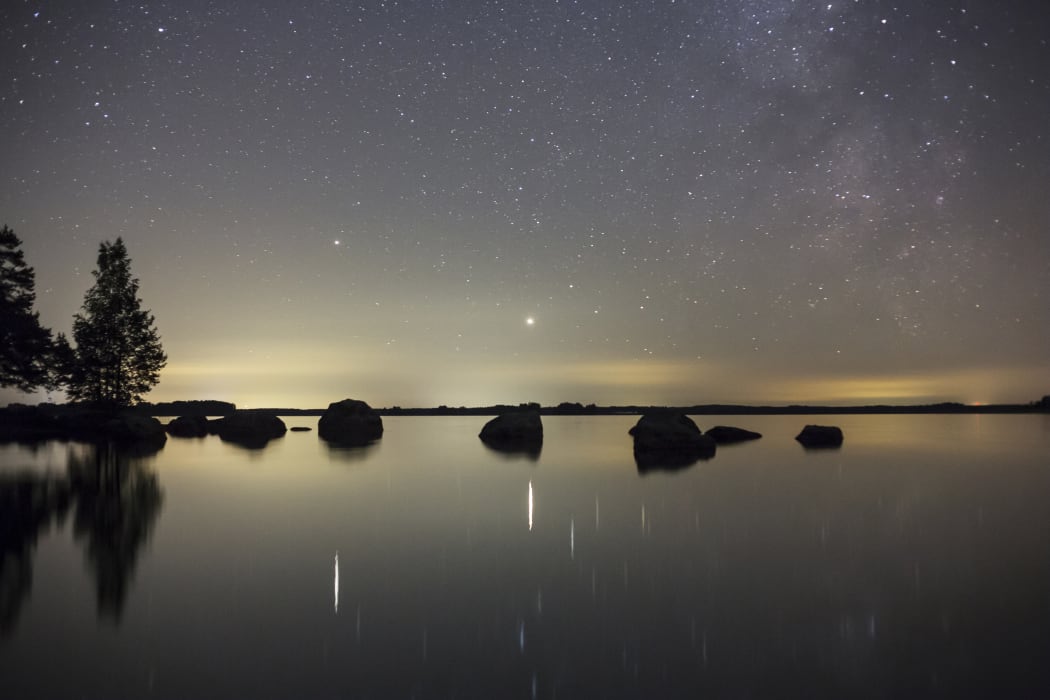
The planets Saturn and Jupiter and part of the Milky Way. Photo: P-M Hedén/ AFP
Assuming the weather is clear, you'll be able to see the planets even in light polluted areas without any equipment.
With your naked eye look for two dots - the smaller Saturn appearing to chase the larger, brighter Jupiter.
On 22 December, the two planets come so close you may not be able to see the gap between them, Musgrave says.
"The very fact you can look at a dot and say 'that's two separate planets fairly close to each other' is going to be amazing," he says.
Wesley is anticipating getting a good view of the event from [central Queensland].
"Out here, there's nothing but dirt and kangaroos so I've got no problems seeing them all the way down to the western horizon," he says.
Wesley has captured stunning images of the planets using high-speed video camera attached to an 8-metre telescope.
However, with binoculars or a small to medium telescope you'll be able to catch details such as Jupiter's four largest moons, he says.
"The innermost moon Io only takes three days to do a full orbit. So even just over the space of an hour or two it moves quite noticeably compared to the other moons," Wesley says.
With a small telescope you could pick up detail such as the two dark bands either side of Jupiter's equator, and if you're lucky, you may even be able to make out the great red spot.
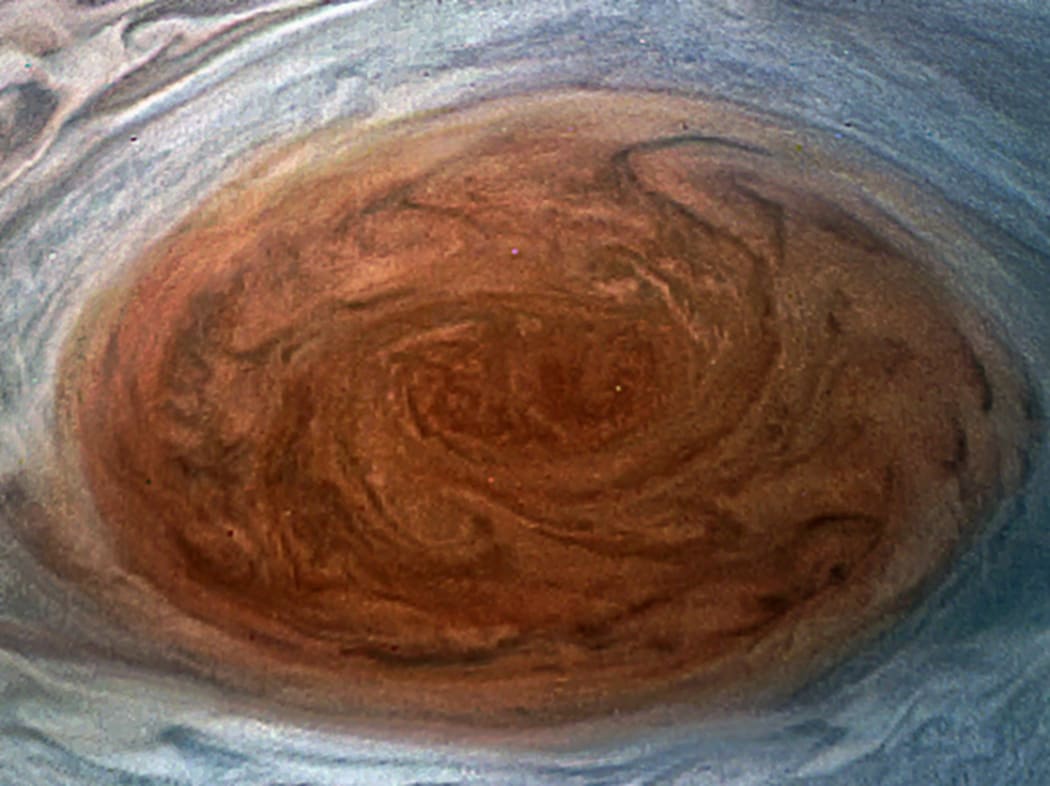
The Great Red Spot on Jupiter. Photo: AFP PHOTO /NASA/SWRI/MSSS
"Jupiter only takes about 9 hours 40 mins to do a full rotation, so at some point at each one of those rotations it's facing toward the Earth," Wesley says.
There are apps and online calculators you can use to see when the red spot is facing Earth when the planets are above the horizon in the evening sky where you live.
You will also be able to see the rings of Saturn and a couple of its moons, such as Titan, through a small telescope.
"The rings on Saturn are at the same size across as Jupiter so even with a moderately small telescope you'll see Saturn and you'll see the rings," he says.
Geminids meteor shower in mid-December
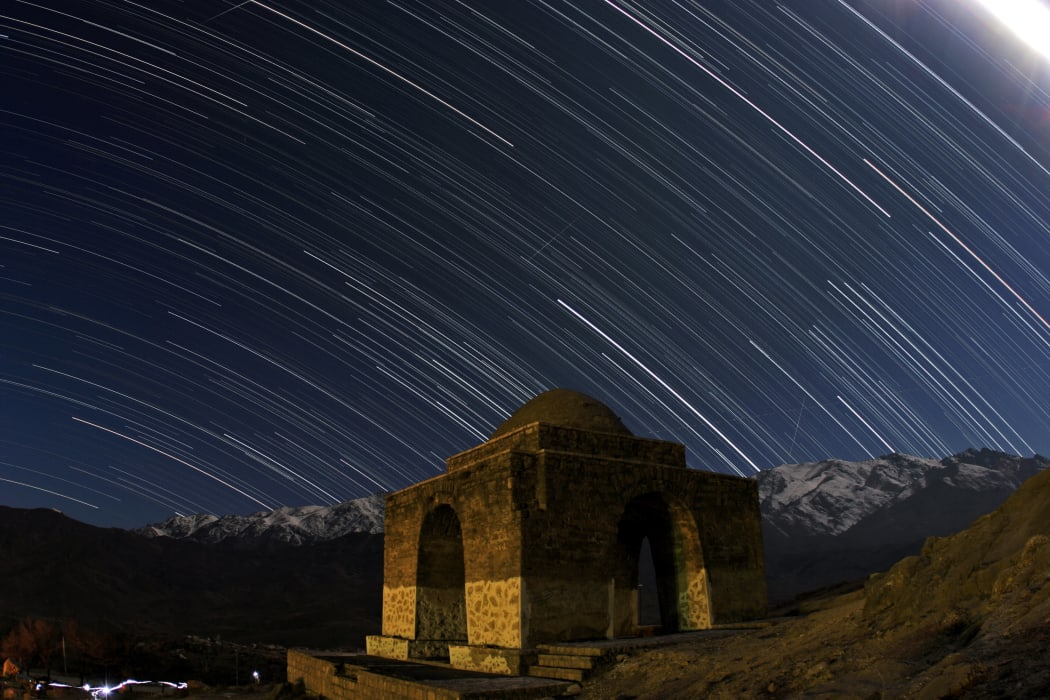
Geminid meteors above the ancient Zorrostrian Fire Temple, Kashan, in Niasar, Iran. Photo: B.A.Tafreshi/Novapix/Leemage/ AFP
December is also the month to see the annual Geminids meteor shower.
And this year, with no moon to wash out the view, it is set to be a cracker.
The meteor shower, which is caused by Earth passing through a trail of debris created by the asteroid 3200 Phaethon, will be at its best on 14 and 15 December in New Zealand.
"If you're looking north it's very easy to see Castor and Pollux [the two bright stars of Gemini].
"The radiant of the Geminids is just below Castor, and off to one side you've got Orion and Taurus."
- ABC

